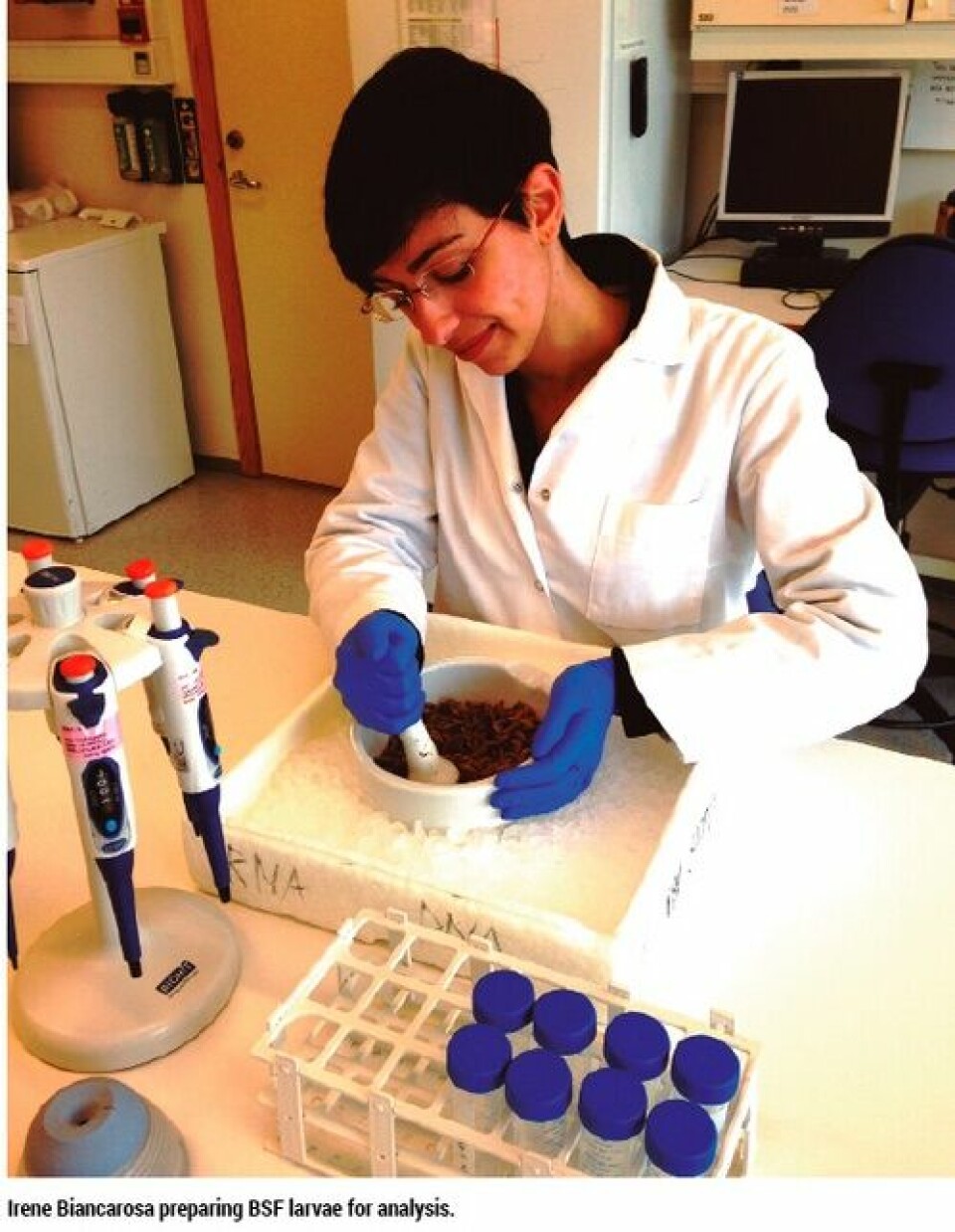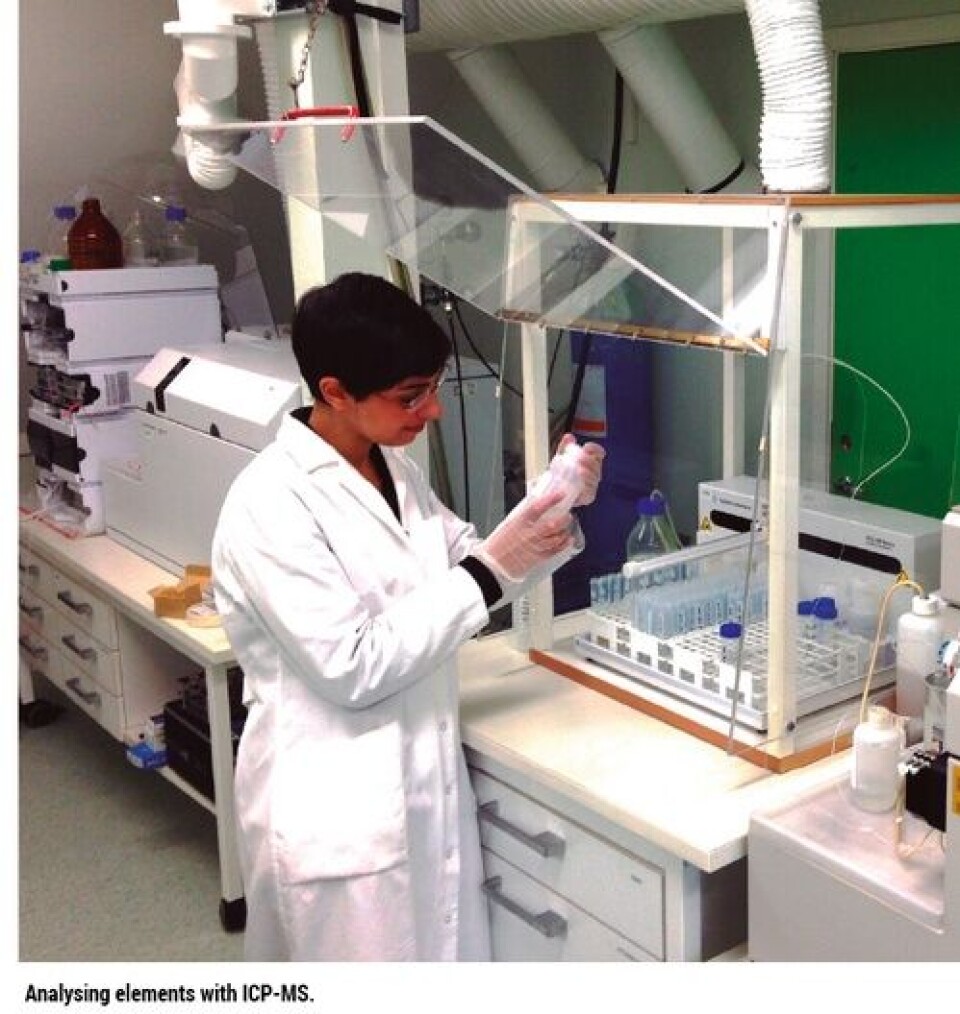A six-legged solution to feeds
By Rob Fletcher
The main aim of the project, which involves 12 research and industry partners from across Europe and Scandinavia – including Stirling University’s Biology Department – is to utilise “ingredients which are not considered as human food and which do not compete with food production for limited resources”. Fish Farming Expert recently caught up with Dr Erik-Jan Lock, a research scientist at NIFES, specialising in vitamin and mineral nutrition in Atlantic salmon. He is leading the AquaFly work package responsible for the selection of marine substrates to use as feed for the production of several species of insects, as well as being responsible for coordinating the planned feeding trials. Here he reflects on what inspired the project, what progress has been made to date and what challenges the initiative will have to overcome before fish raised on a diet that includes insect derivatives will be available to consumers.

Why did you decide to use insects? Insects, we believe, are able to convert wastes and under-used resources from the marine environment into high quality fish feed ingredients. Our main hypothesis is that insects are outstandingly powerful organisms able to upgrade less favourable organic resources to highly nutritious feed ingredients for Atlantic salmon. In this project two feeding trials will be conducted – one in fresh water and one in sea water – growing salmon up to commercially relevant slaughter size. We will follow the transfer of nutrients, contaminants and other compounds found in macro algae and tunicates to insects, fish feed and to fish. The project aims to exploit the great potential of insects as highly efficient converters of under-used, non-marine and marine organic material to high value nutrient sources tailor-made for sustainable production of robust Atlantic salmon.

Are you primarily involved in the formulation of the feeds or the effects of the feed on the fish health? In the AquaFly project all of the topics above will be addressed, by one or more of the partners in the project. The formulation of the feeds will be done by EWOS in cooperation with NIFES; the fish health part is partly being undertaken at NIFES, together with NMBU (Norwegian University of Life Sciences). The primary involvement of NIFES, including myself, is to investigate the possibilities to use insects to convert underused marine matter into safe feed ingredients for salmon. We do this by following the transfer of nutrients and undesirables (eg cadmium and arsenic) from eg seaweed -> insect -> insect product -> feed -> fish. At NIFES we work on fish nutrition as well as feed and food safety.
What can be learnt from previous insect feed trials? There is not much data available on the use of insects in fish feed. The data that exists is on various types of insects, processed or unprocessed, and it can be difficult to compare studies and interpret them since the origin/processing method and quality of the insect meal is not always clear. However, that said, despite the large variability in insect meals, the results consistently show great potential for insect meal as an alternative to fishmeal.
Where do you source your insect meal? Protix Biosystems BV is a partner in the project so all the insect products used in AquaFly are from Protix. Protix is producing black soldier fly (BSF) larvae on a commercial scale, however the larvae fed on various amounts of marine ingredients are specifically produced for this project.
In the current trial are the insects only fed marine ingredients or are some being fed general food waste? For this project the purpose is to feed them a diet containing as much marine ingredients as possible, more specifically ‘underused’ marine ingredients that cannot be used directly for human consumption. This means we are using mainly seaweed and we are trying tunicates as well. For the seaweed we are looking into the brown algae that have a huge biomass to harvest in the wild but also red and green algae that have great potential for cultivation. Here, we are thinking about the waste from these algae that is generated when the best pieces are used for primary purposes (eg making nori) and there is a remainder that cannot be used (stalks, low quality leaves, etc). In IMTA algae are grown in the vicinity of sea cages and these can for example be used to feed insects, that may (after processing) end up in the salmon feed again.

What sort of insects have proved to be most effective? From what I have seen so far, it is the fly larvae – especially those of the BSF – that stand out at the moment. It can feed on a large variety of organic material, giving the producer more flexibility. Another group of insects with a high potential are the beetle larvae, the mealworms. But there are so many types of insects, and some are highly specialized on a specific substrate that the possibilities are almost endless. The kelp fly for example, which is specialized to feed on beach-cast seaweed and only lives in the intertidal zone, but plays a very important role in converting seaweed into a protein and lipid source that can be used by birds or fish when the larvae are swept into the sea at high tide. Insects (but also bacteria and fungi) fulfil this role in the food chain in nature and we want to use that in this project. What proportion of the feeds is going to be insect-based and what other ingredients will be used alongside this? We have not formulated the diets yet since we are still in the process to see how much we can change the nutrient composition of the insects. Two feeding trials are planned, a first-feeding trial and a grow-out trial in seawater. We will aim for a high inclusion of insect meal to replace fish meal. In a previous trial we have done (the paper has been accepted for publication in Aquaculture Nutrition) we have replaced 100% of the fishmeal (in a control diet containing 20% FM of the total formulation) by insect meal. The fish grew from 200 to 550 grams and there was no difference in growth and FCR between the control fish and the fish fed insect meal. In the AquaFly project we will also replace part of the fish oil by insect lipid.
What are the main challenges encountered so far? AquaFly is still in the first year of a 4-year period and we have not encountered any major obstacles yet. The main challenge so far, however, is the processing of the seaweed, which is very tough and hard to grind down – a crucial phase for BSF, which allows it better access to the nutrients. The kelp fly on the other hand is able to chew down seaweed without major grinding, which is partly why we have included this species in the project.
What are your main achievements to date? When we wrote the project and envisaged that we could feed seaweed to insects we had no idea whether this would actually work. We of course knew that the kelp fly would eat seaweed, but for the BSF we did not know. We were very glad to find out they did accept a certain inclusion level of seaweed in their diet and we see changes in their nutrient composition. How hard has the international/multi-research facility approach been to coordinate? We are very lucky to have very enthusiastic partners in the project, both from the academic side as well as on the commercial side and so far it has been great to work with right from writing the proposal at the start. This is also a type of project that triggers a curiosity in people that makes them engaged from the beginning. Every partner brings its own competence to the project and there are no overlapping interests, which helps things go smoothly. If the project proves successful, what’s the earliest it might be possible to produce marine ingredient-fuelled insect meal on a commercial scale? Insect meal is already produced commercially of course, but the type of insect meal and lipid we are looking into in this project depends on the industry’s decision and is out of the hands of NIFES. Our role as research institute is to produce knowledge on the transfer of nutrients and undesirables along the substrate-insect-fish food chain. If the project proves successful, when might the first insect-raised salmon be available to consumers? I hope to see this in the near future, however at this moment insect products cannot be used to produce salmon for the commercial market. This has to do with legal limitations in the EU. EFSA has been working on an opinion on this that will soon be sent to the European Commission. We will have to wait and see what they decide. The insect meal companies are currently selling their products to the pet food industry, as they are allowed to use it.
Can you envisage insect farms becoming commonplace in the West? Anywhere you find organic material that has no value any longer (supermarket waste, or an organic side stream of another industry) you can place an insect farm. There are many of these waste streams in the Western world. If you feed this to insects, you can upgrade the material to a high quality product that can be fed to animals, or (for the brave) eaten directly by humans. I don’t see why this would not have a future.
The Aquafly project is funded by The Norwegian Research Council (grant no. 238997/E40) and is led by the National Institute of Nutrition and Seafood Research (NIFES). Project partners include: Bioforsk, the Norwegian University of Life Sciences (NMBU), the University of Bergen’s Centre for Scientific Theory, Uni Research, the Norwegian Agricultural Economics Research Institute (NILF), Gildeskål Research Station (GIFAS), EWOS Innovation, Protix Biosystems BV (The Netherlands), the Irish Seaweed Research Group at the National University of Ireland, Galway, the Department of Environmental Science and Technology at the University of Barcelona (Spain), and the Department of Biological and Environmental Sciences at the University of Stirling (UK).




















































